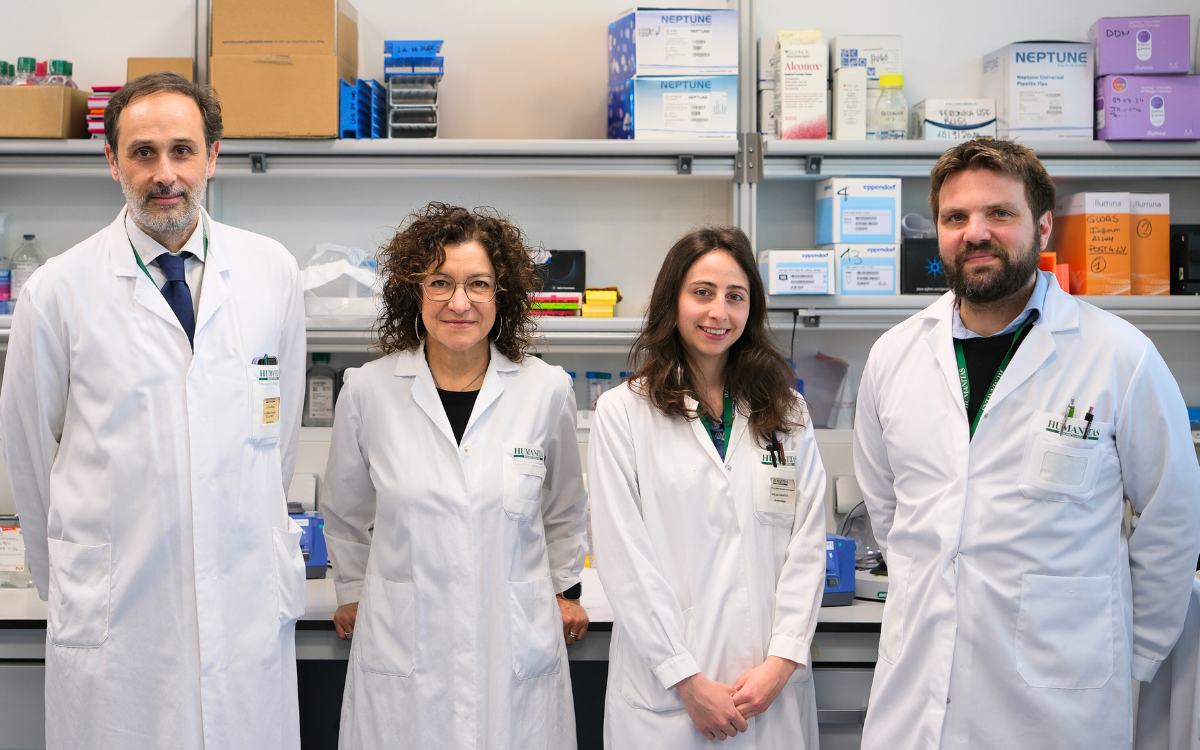Myelodysplastic syndromes: new predictive role of the ‘guardian of the genome’ discovered

A study led by Humanitas has identified the mechanisms underlying the progression of myelodysplastic syndromes into leukemia, paving the way for new diagnostic and therapeutic strategies
Myelodysplastic syndromes (MDS) are a heterogeneous group of blood disorders characterized by inefficient blood cell production. Patients with these conditions are at a higher risk of developing acute myeloid leukemia (AML). But how can we identify those most likely to experience disease progression? Properly stratifying patients by risk profile would allow doctors and researchers to intervene early and more effectively.
The findings of a study recently published in the Journal of Clinical Oncology by a group of hematologists and scientists from Humanitas, in collaboration with King’s College London, offer new hope in this area. Led by Prof. Matteo Della Porta – Head of the Leukemia Unit at IRCCS Istituto Clinico Humanitas and Professor at Humanitas University, and Francesca Ficara – CNR researcher, the team discovered a new risk marker and identified a potential diagnostic strategy based on the well-known gene encoding p53, the so-called “guardian of the genome.”
This research was made possible through collaboration with international partners in the GenoMed4All project and with support from the AIRC Foundation for Cancer Research.
The guardian of the genome and myelodysplastic syndromes
MDS has long posed challenges for doctors and researchers due to its clinical and biological variability, making it difficult to predict disease progression accurately and select the most appropriate treatment for each patient. Traditionally, research has focused on the role of genetic mutations – alterations in the DNA of blood cells – as the primary drivers of the disease.
Among the most frequently implicated genes is TP53, which encodes the p53 protein, known as the “guardian of the genome.” “p53 plays a crucial role in preventing tumor formation by detecting harmful genetic mutations and triggering the cell’s self-destruction. When the gene is altered, the p53 protein malfunctions, leading to the accumulation of abnormalities in blood cells and tumor progression,” explained the study’s lead authors, Matteo Zampini, Elena Riva, and Luca Lanino, researchers in Prof. Della Porta’s team.
The new study confirmed the importance of TP53 mutations in MDS, demonstrating that their presence is associated with a particularly poor prognosis—not only when both gene copies on the chromosomes are altered, as previously known, but also when only one copy is mutated.
“However, the most surprising discovery was the identification of a significant group of patients who, despite not having TP53 mutations, exhibited clinical behavior as aggressive as that seen in patients with the most severe mutations,” the authors noted.
In other words, even in the absence of gene defects, the p53 protein fails to act as the “guardian” due to other factors affecting its function.
These mechanisms of p53 dysfunction, unrelated to genetic mutations, represent a groundbreaking discovery, as they suggest that analysing mutations alone may not suffice to identify all high-risk MDS patients. Additionally, the Humanitas team demonstrated that bone marrow in patients with dysfunctional p53, whether mutated or not, is characterised by inflammation and immunosuppression, enabling cancer cells to evade immune system control.
Translational implications of the discovery
“In the study, we also demonstrated the effectiveness of a simple and inexpensive diagnostic method, based on immunohistochemical analysis of a bone marrow sample, that can identify patients without TP53 mutations but with dysfunctional p53 protein, who are therefore at high risk of developing leukemia,” said Matteo Della Porta and Francesca Ficara. “This is possible because the non-functioning protein accumulates in tissues, making it easily detectable.”
This approach allows for more accurate stratification of MDS patients, better defining their risk and guiding more personalized therapeutic choices. Even non-mutated patients could benefit from the aggressive treatment regimens currently reserved for those with TP53 mutations.
Furthermore, understanding the molecular and immunological alterations associated with p53 dysfunction opens the door to developing innovative drugs capable of restoring normal p53 function or modulating the immune response.
“This study represents a significant step forward in our understanding of myelodysplastic syndromes,” concluded Ficara and Della Porta. “The results not only enable more precise identification of high-risk patients but also pave the way for the development of more effective, targeted therapies, with the promise of significantly improving the prognosis of these serious blood diseases.”